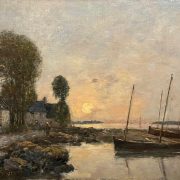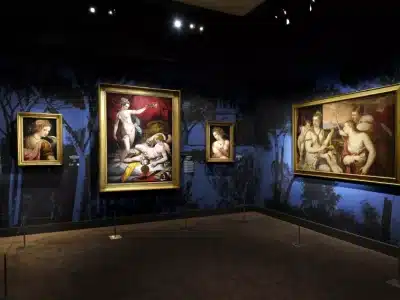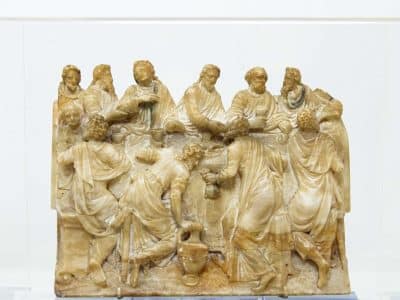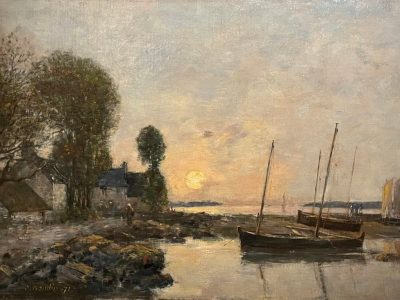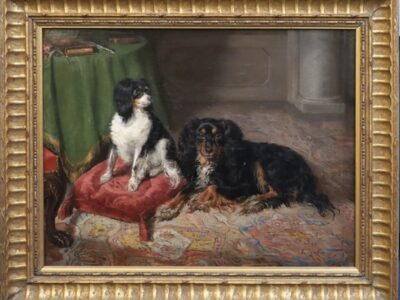Blue, pink, yellow, green is snow. And sometimes white, sometimes only. Its crystals are like as many prisms refracting all the colors of light. Of course, the impressionists had to explore all these variations and nuances. The painters of spontaneity, of the fleeting moments had to harness snow for its colors, but also for its evanescence.
They did it early in their artistic journey. The most iconic of all the impressionist paintings with snow must be “The Magpie” by Claude Monet. It was painted in 1868-69, five years before the first impressionist exhibition. Two year prior to the painting, Monet even admitted to his friend Frédéric Bazille “to find the Normandy countryside maybe even more pleasant in winter than in summer…”
The five artists presented here are either impressionists of the first and second generation or they navigated between realism and impressionism (but isn’t it what Edouard Manet was doing too?). Their paintings show you a diverse mix of countryside and parisian views on a grey day or with the sun that came after the snow, an opportunity to enjoy different sky lights and nuances in the snow.
Adolphe-Félix Cals
Adolphe-Félix Cals (1810-1880) participated to four impressionist exhibitions. Considering his age and experience, he is even considered as a precursor of Impressionism with Boudin and Jongkind. After all, he started exhibiting at the Salon in 1835—Monet wasn’t not born.
Cals is among the many artists who went to the famous Saint-Simeon farm in Honfleur, Normandy, in the tow of Boudin and many other impressionist artists. It is very moving to see the Butin farm depicted below, under the snow. It is only a ten-minute walk to the Saint-Simeon farm.
We recognize the relatively dark palette of Cals who exemplifies here “grey impressionnism” as labeled by his patron Count Doria. Later in 1879, another painting was made of the same place. That time, the farm was in a green shrine enveloped in spring-like light. Two paintings is too few to call it a series, but the idea is here.
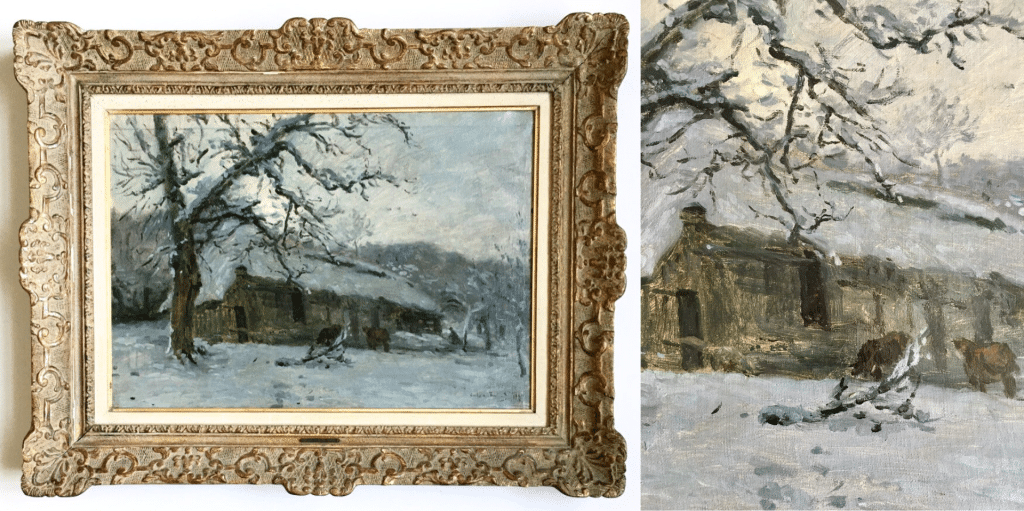
A good example of grey impressionism by Adolphe-Félix Cals with this 1878 farm of Butin under the snow in Honfleur. It was included in a 1943 exhibit about Cals in the Galerie Jacques Dubourg, Paris. © Dupire et Kotek
Paul Vogler
As much as Paul Vogler (1852-1904) must have worked with Alfred Sisley for a time, it would be difficult not to think of Claude Monet’s haystacks series (made in 1890-91) when looking at Vogler’s painting below.
The collector and art critic Gérald Schurr wrote of self-taught Vogler in 1969: “If he does not have the chromatic finesse of Sisley, his eye perceives the thousand nuances of dawn and dusk; winter is his favorite season, and he recreates its melancholy poetry in compositions that are always harmonious.”
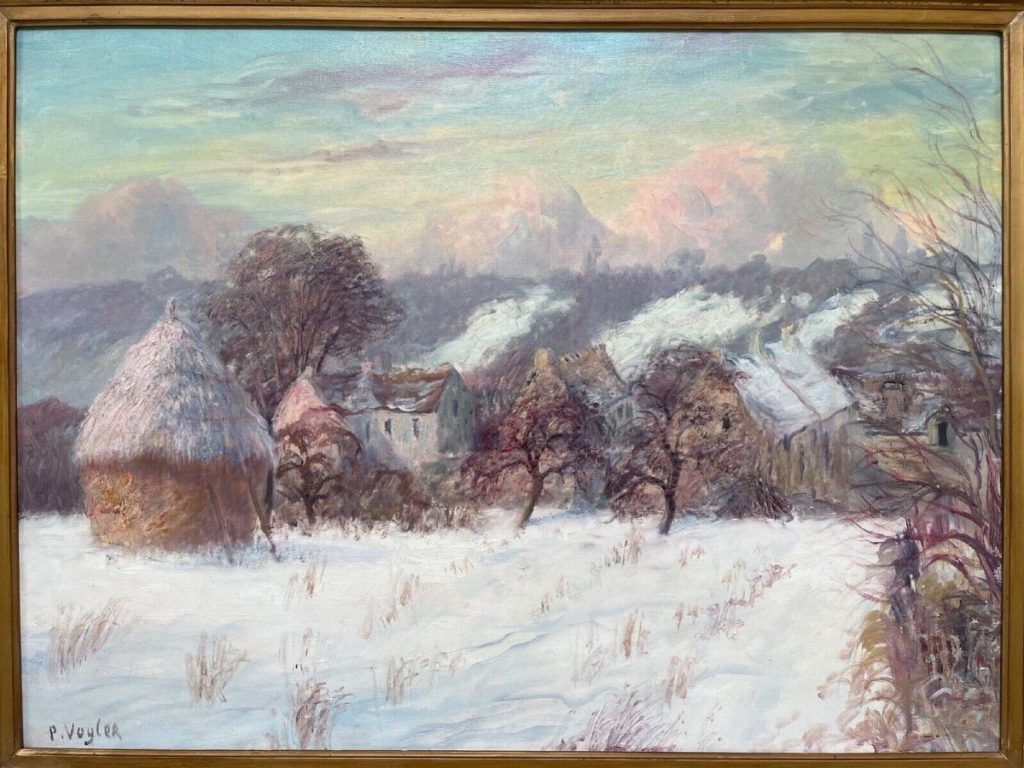
Snow landscape with haystacks by Paul Vogler. The multicolored sky is balanced by the overall whiteness of the snow. © Antiquites Saint Jean
Léon Broquet
As a student of Claude Monet and Antoine Guillemet, Léon Broquet (1869-1935) developed his talents in an impressionist environment. Snow is a recurrent motif in this oeuvre. His two artworks held in the collection of the Musée d’Orsay are Notre-Dame de Paris and a countryside road, both under the snow.
The oil on canvas below was most likely created between 1897 and 1904 (or some time after) considering the stamp of the canvas seller on the back. Broquet’s fame reached its peak during the First World War when he volunteered to fight and illustrate the war and its tragedies on the front line and in the trenches.
He had a wonderful sense of scale and mastered the use of empty spaces and strong lines, which seemed to push the canvas edges. Here, the unfinished look of the painting is also quite fitting to Impressionism.
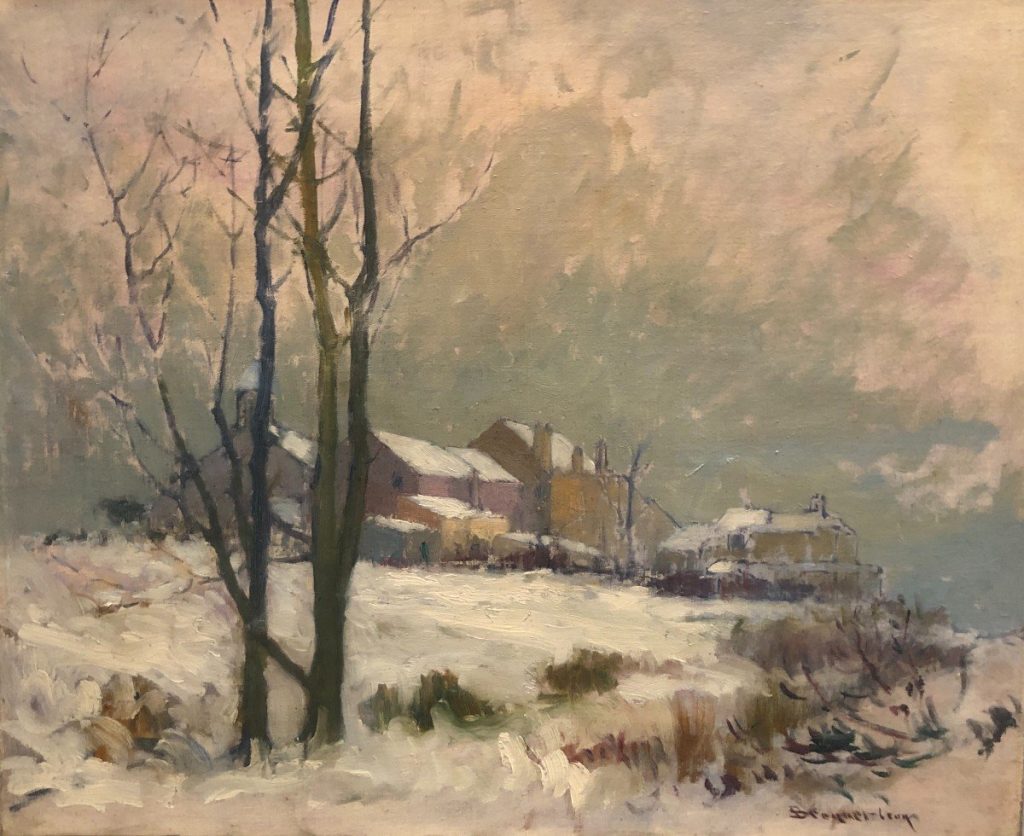
A large winter landscape with snow by Léon Broquet. © Bailliet Antiquités
René Billotte
René Billotte (1846-1914) was not part of the impressionist group. Nevertheless, this relentless painter of Paris and its suburbs, with a predilection for winter city landscapes, sunsets and open perspectives, shared with them a fascination for light and for the transformation of Paris.
With his studio 29 boulevard Berthier in Paris, on the edge of the fortifications (the topic of our painting below) and the Zone—a strip of land that used to be dedicated to Paris military defense where eventually slums developed—, he was a short walk to the Porte d’Asnières. As many spots he depicted repeatedly. The title of his painting in the Musée d’Orsay collection is “Landscape; snow at the porte of Asnières”. From there, it was also easy for him to observe the trains (those connecting the gare Saint-Lazare to Normandy). Or take one to paint on the spot in Normandy, which he also did.
He was close friend with the famous writer Guy de Maupassant, originally from Normandy, himself friend of illustrious journalist and novelist Emile Zola, an early defender of impressionists. So, if not an impressionist, Billotte was nonetheless a modern and fashionable painter of his time.

A view of the fortifications under the snow by René Billotte. © Galerie Mazarini
Pierre Vauthier
It is certainly not a coincidence if the art collector (and wealthy coal trader and businessman) from Rouen, François Depeaux, also a patron of the Impressionist movement in Normandy, had a painting of Pierre Vauthier (1845-1916) in his collection. Starting with a realist streak, Vauthier evolved towards Impressionism. The Musée d’Orsay hosts three of Vauthier’s artworks.
Is it his engineer side (he graduated from the prestigious Centrale Paris school before studying the arts with Maxime Lalanne) that made him so interested in the commercial and industrial side of the Seine and Oise rivers? Besides more common boating or water scenes, he loved representing steamers and barges leaving a smoky trail behind them, evolving in a misty atmosphere. That is why the oil on canvas below perfectly exemplifies his artistic vision with, on top of it, a gorgeous influence of William Turner.

banks of the Seine, Notre-Dame de Paris appears in the mist as the sun is piercing through. Oil on canvas by Pierre Vauthier. © Violon d’Ingres
~
~ MAIN STORY: Impressionism Celebrated by PROANTIC ~
~
You May Like
19th-Century Fine Arts | Landscape Paintings | Seascapes & Marine Paintings | Adolphe-Félix Cals | Paul Vogler | Léon Broquet | René Billotte | Pierre Vauthier


